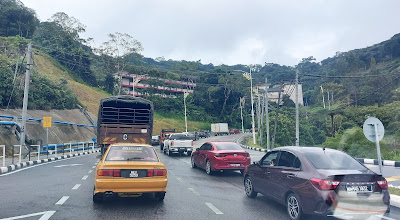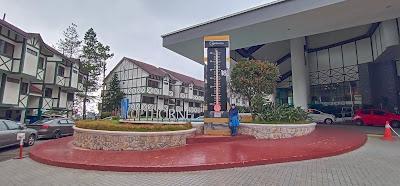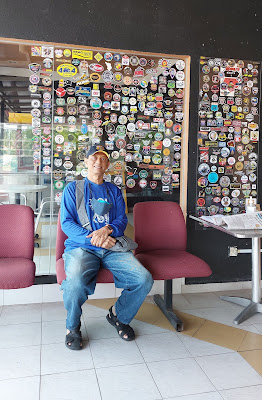“The best portion of a good man’s life is his little nameless, unencumbered acts of kindness and of love...” - Wordsworth
 |
| (A beautiful sunny day) |
It was only a day trip to Teluk Intan, driving leisurely along the coastal road of Kuala Selangor.
In the early days, Teluk Intan town was known as Teluk Mak Intan, after a female Mandailing trader. The area around Teluk Intan was originally populated by refugees from the Malacca Sultanate who were part of the entourage of the Raja Muzaffar Shah, the eldest son of the last Sultan of Melaka, Sultan Mahmud Shah. Upon fleeing the Portuguese conquest of Melaka in 1511, a new kingdom was established on the banks of the Perak River near what is now Teluk Intan, and the court remained there until its relocation to Kuala Kangsar in the 19th century. It was here that the Perak rulers held court from 1528 until Kuala Kangsar became the royal town in 1877.
 |
| (Crossing the Selangor/Perak border) |
 |
| (Colourful signage all over town) |
 |
| (Another signage) |
 |
| (Burial site of a wild elephant) |
During the British protectorate era, Teluk Intan was changed
to Teluk Anson or Anson Bay, in honour of a British officer and
last lieutenant-governor of Penang,
Major-General Sir Archibald Edward Harbord Anson, who drew the plan of
the modern township in 1882.
In 1982 during the centenary of the town's establishment,
the name was changed again to Teluk Intan (Diamond Bay) by the Sultan
of Perak. Leaning Tower of Teluk Intan is
one of the town attractions. The town has a number of colonial buildings and
Chinese shophouses together with modern buildings.
 |
| (Teluk Intan Street Arts) |
 |
| (Another Street Art) |
 |
| (The Leaning Tower) |
The Leaning Tower of Teluk Intan is a clock tower in Teluk Intan, Hilir Perak District, Perak, Malaysia. It is the Malaysian equivalent of the world-famous Leaning Tower of Pisa in Italy. The tower is slanted leftward, similar to the Tower of Pisa. It is 25.5 metres tall and, from the outside, looks like an 8-storey building, though inside it is actually divided into 3 storeys.
 |
| (Kampung style dishes for lunch) |
 |
| (Restoran Udang Galah Teluk Intan) |


























































